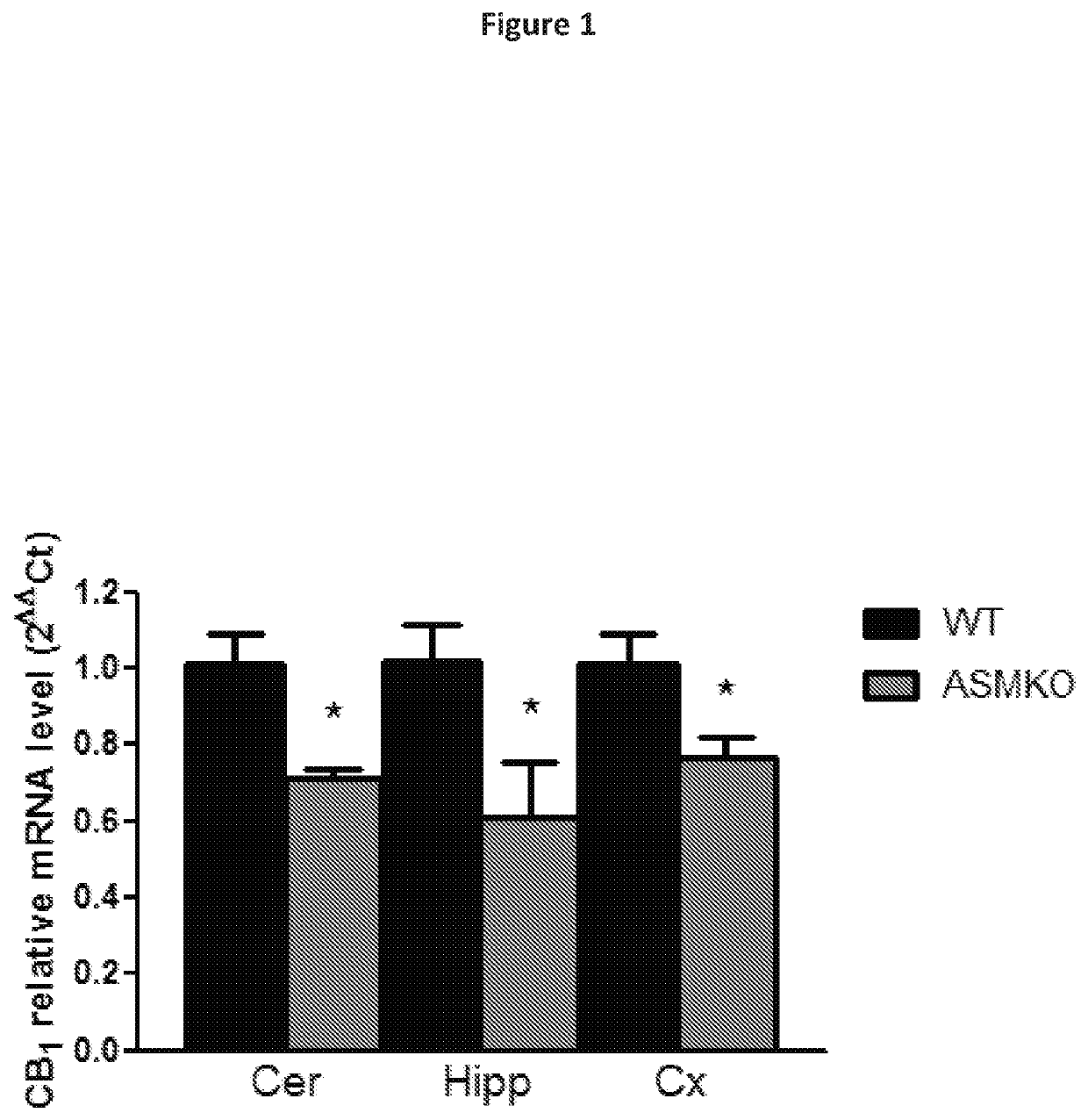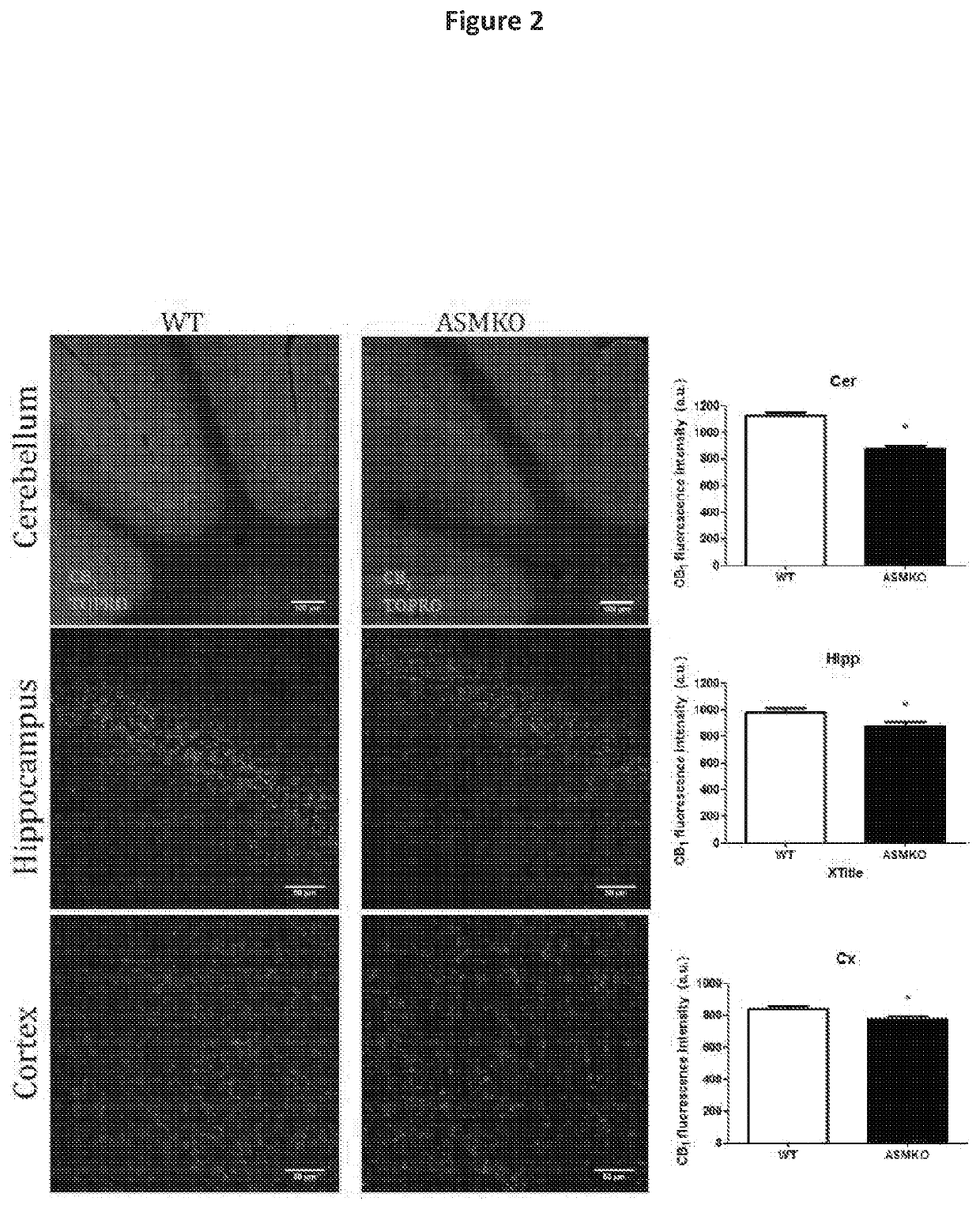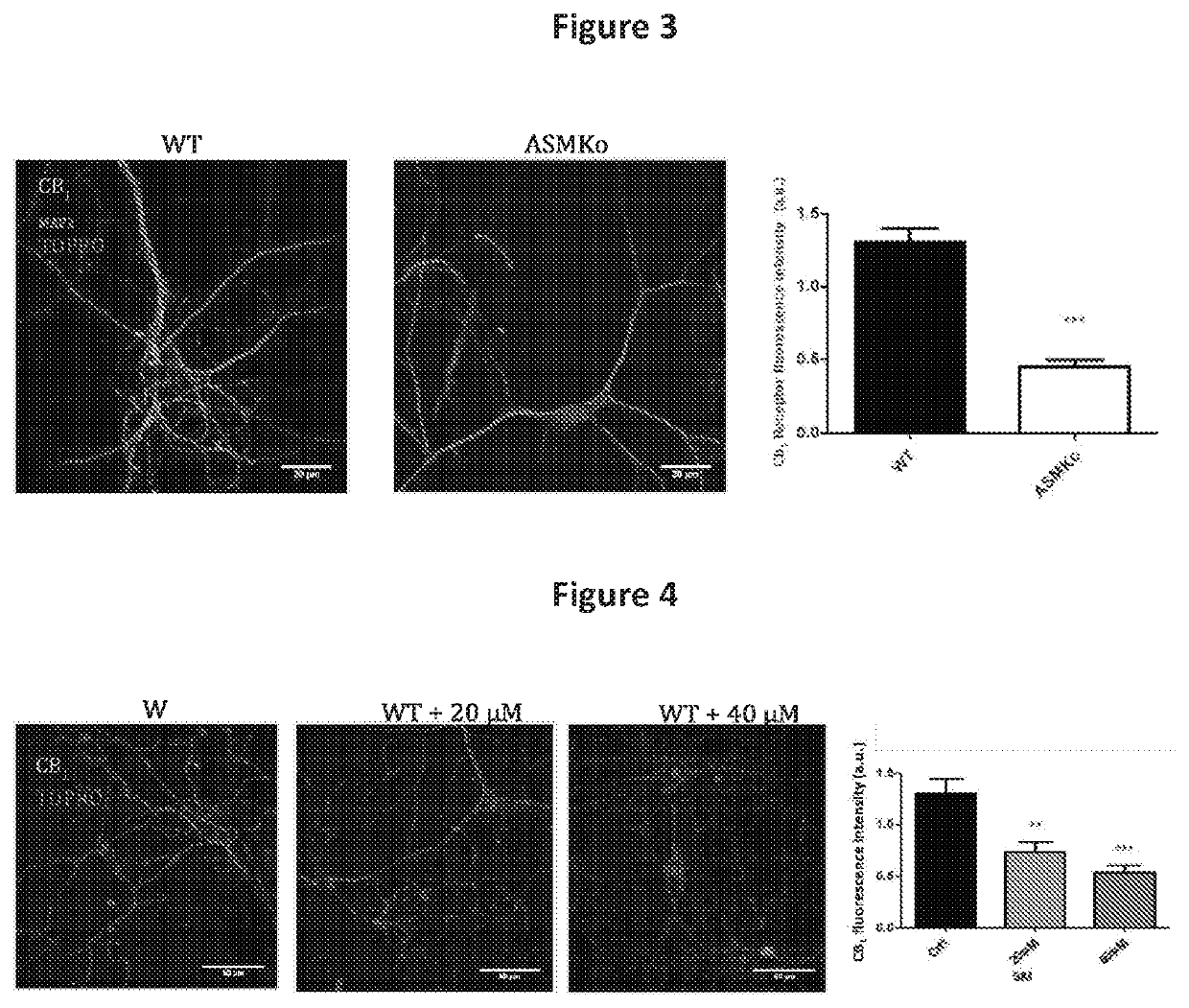Compositions and methods for activating signaling through the cb1 cannabinoid receptor for treating and preventing diseases and disorders characterized by abnormal cellular accumulation of sphingolipids such as sphingomyelin
a cannabinoid receptor and activation signal technology, applied in the direction of amide active ingredients, drug compositions, enzymology, etc., can solve the problems of cellular accumulation of sm and various associated toxicities, and reducing the enzymatic activity of the plasma membrane, so as to prevent neuronal death, reduce the level of sphingomyelin, and improve the cognition, learning and/or memory of the subj
- Summary
- Abstract
- Description
- Claims
- Application Information
AI Technical Summary
Benefits of technology
Problems solved by technology
Method used
Image
Examples
example 1
Alterations of the Endocannabinoid Receptor CB1 in the Brain and in Cultured Neurons from Acid Sphingomyelinase Knock Out Mice (Asmko), a Model for NPA
Background
[0156]ASMD is caused by loss of function mutations in the (SMPD1) encoding acid sphingomyelinase (ASM). A knockout mouse lacking the ASM gene has been previously generated and validated as a model for Niemann Pick disease type A (NPA). This mouse is referred to herein as an “ASMko” mouse. The ASMko mice we utilized in the following studies were in the C57BSL / 6 strain, and in all experiments, mice were fed regular diet and provided water ad libitum from lixits. Samples of water were routinely analyzed for specified microorganisms and environmental contaminants. Environmental controls for the animal room were maintained at 22±2° C., a relative humidity of 55±10%, a minimum of 10-12 air changes / hour, and a 12-hour light / 12-hour dark cycle.
Methods
[0157]We analyzed mRNA and protein expression of the CB1 cannabinoid receptor in th...
example 2
High Levels of Sm Reduce CB1 Protein in Cultured Hippocampal Neurons
[0164]We hypothesized that high sphingomyelin levels in the ASMko mice may induce CB1 protein reduction in neurons. We therefore confirmed this hypothesis by incubating 14 DIV primary cultured neurons from wt mice with different doses of sphingomyelin (20 μM and 40 μM) for 24 hours.
[0165]As shown in FIG. 4, CB1 protein levels were reduced by the lipid in a dose dependent manner (44% and 60%, respectively, with respect to non-treated neurons).
Conclusions
[0166]High levels of sphingomyelin induce CB1 protein reduction.
example 3
Activation of CB1 Reduces Sphingomyelin Levels
[0167]The high sphingomyelin-induced reduction of CB1 suggests that the endocannabinoid system is downregulated in ASMD, and especially prominent in the most severe neurovisceral forms of ASMD. This could underlie alterations in physiological processes such as cognition, response to stress, and body temperature control in which this system is critically involved.
[0168]Accordingly, we posited that pharmacological enhancement of the endocannabinoid system might be a suitable therapeutic strategy not only for NPA, but also for other lysosomal storage disorders in which sphingomyelin accumulates. Activation of CB1 would not only restore the normal activity of the endocannabinoid system but might also contribute to reduce sphingomyelin levels, as CB1 activation with exogenous tetrahydrocannabinol or endogenous anandamide has been reported to activate neutral sphingomyelinase (although the authors saw their result in primary astrocytes alone, ...
PUM
| Property | Measurement | Unit |
|---|---|---|
| time | aaaaa | aaaaa |
| time | aaaaa | aaaaa |
| weight | aaaaa | aaaaa |
Abstract
Description
Claims
Application Information
 Login to View More
Login to View More - R&D
- Intellectual Property
- Life Sciences
- Materials
- Tech Scout
- Unparalleled Data Quality
- Higher Quality Content
- 60% Fewer Hallucinations
Browse by: Latest US Patents, China's latest patents, Technical Efficacy Thesaurus, Application Domain, Technology Topic, Popular Technical Reports.
© 2025 PatSnap. All rights reserved.Legal|Privacy policy|Modern Slavery Act Transparency Statement|Sitemap|About US| Contact US: help@patsnap.com



